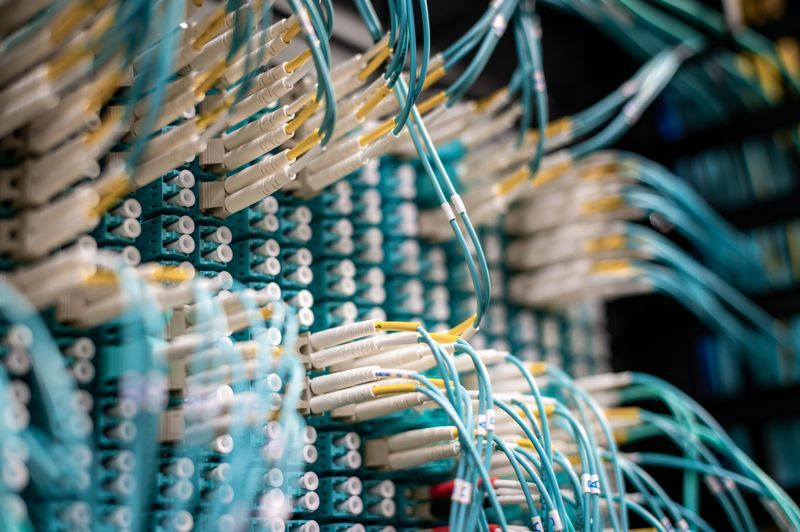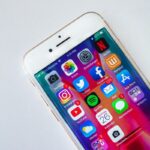Apple Switches from Lightning to USB-C Charging Port
Apple has announced a significant shift in its charging port technology. After over a decade of utilizing the “Lightning” port in its devices, Apple is transitioning to USB-C with the release of the new iPhone 15 and 15 Pro. The company claims that the shift to USB-C will bring numerous benefits in terms of charging, data transfer, and compatibility with audio and video. Additionally, Apple states that the same USB-C cable can be used to charge other Apple devices that have already adopted this port, such as the Mac and iPad. To align with this change, Apple will also introduce a new case for the AirPods Pro that will no longer use the Lightning plug.
Enhanced Functionality and Charging Capabilities
With the implementation of the USB-C port, the new iPhone models will support charging for the AirPods Pro and Apple Watch. This means that users can connect a USB-C cable between the iPhone and these devices, allowing for power to flow both in and out. Furthermore, similar to previous iPhone models, the new devices will continue to support Apple‘s “MagSafe” feature, enabling wireless charging.
Mandatory Transition Driven by EU Regulations
The decision to replace the Lightning port with USB-C was influenced by new regulations enforced by the European Union (EU). These regulations require all electronic gadgets to standardize on the USB-C port in order to create a universal phone charger and reduce electronic waste caused by changing ports. Initially, Apple resisted this change, suggesting that EU officials focus on the other end of the charger cable, where it plugs into the wall, to preserve the advantages of the Lightning port. However, after the regulations were passed, Apple acknowledged its compliance.
It is important to note that Apple will continue to sell accessories, such as keyboards and mice, that are compatible with the Lightning cable. Additionally, older models of iPhones, including the iPhone 14 and SE, which are still available for purchase, will still utilize the Lightning port. Therefore, the Lightning cable will remain in use for some time.
Editorial: The Evolution of Charging Ports and Environmental Impact
The transition from the Lightning port to USB-C marks another step in the evolution of charging port technology. Over the years, we have seen various port types, including micro-USB and USB-C, become the dominant charging standards for different devices. While this transition may cause temporary inconvenience for users who have invested in Lightning-based accessories, the collective move towards a standardized charging port presents significant benefits for consumers and the environment.
Standardization not only simplifies the charging process but also reduces electronic waste. With a standardized port, users can share chargers and cables among multiple devices, eliminating the need for separate chargers for each device. This reduces the production of electronic waste caused by obsolete chargers and promotes a more sustainable consumption model.
Apple‘s compliance with the EU regulations demonstrates the company’s commitment to environmental responsibility. By transitioning to USB-C, Apple aligns itself with a global movement towards sustainability and sets an example for other tech giants to follow. It is encouraging to see major corporations taking steps to reduce electronic waste and prioritize long-term environmental concerns over short-term proprietary interests.
Advice: Adapting to the Transition and Future-proofing Devices
For consumers who already own Lightning-based accessories, adapting to the USB-C transition may require purchasing additional adapters or new accessories. While this may initially be an inconvenience, it is important to note that this shift towards standardization will benefit consumers in the long run. USB-C accessories are widely available and compatible with various devices, ensuring broader compatibility and long-term utility.
Given the inevitability of technological advancements and changes in charging port standards, it is advisable for consumers to future-proof their devices by investing in accessories that align with industry-wide standards. By doing so, consumers can minimize the need for constant upgrades and reduce electronic waste generated by outdated accessories.
In conclusion, Apple‘s decision to transition from the Lightning port to USB-C charging represents a significant development in the realm of charging port technology. This shift towards standardization not only enhances functionality and convenience but also contributes to global efforts to reduce electronic waste. While the transition may pose short-term challenges, it presents an opportunity for consumers to invest in accessories that are compatible with industry standards, ensuring long-term usability and sustainability.

<< photo by Brett Sayles >>
The image is for illustrative purposes only and does not depict the actual situation.
You might want to read !
- Why Apple’s iPhone 15 is Ditching Lightning for USB-C: Exploring the Shift in Charging Technology
- The Future Is Here: Apple Unveils the iPhone 15
- Editorial Exploration: The upcoming Apple Event in 2023 is highly anticipated, as tech enthusiasts eagerly await the reveal of the iPhone 15. With the event just around the corner, people are searching for the best way to watch the unveiling of the latest iPhone model. This article will delve into the various options available for tuning in to the Apple Event, providing readers with guidance on how to watch the iPhone 15 reveal tomorrow.
Title: “Eagerly Awaiting the iPhone 15: A Guide to Watching the Apple Event 2023”
- France’s iPhone 12 Ban Threat: Examining Radiation Concerns and Potential Sales Implications
- Apple’s Highly Anticipated iOS 17 and iPadOS 17 Set to Launch on September 18th
- Manchester United Secures Groundbreaking Jersey Partnership with Qualcomm
- Apple Unveils Exclusive Leaks: Introducing the Upgraded iPhone 15 and iPhone 15 Pro
- Apple Event: Unveiling the Hottest Last-Minute Rumors for iPhone 15 and Beyond
- The Rise of Nothing Phone: A Stunning Competitor to the iPhone
- “The Ultimate Triumph: Taylor Swift Dominates the 2023 MTV VMAs with Nine Victories”
- Struggles and Triumphs: Italy Overcomes Ukraine 2-1 in UEFA Euro 2024 Qualifiers
- EastEnders’ Brian Conley Ventures into Surprising New Project
- “Apple Unveils Release Dates for iOS 17 and WatchOS 10: A Glimpse into the Future of Apple Devices”




